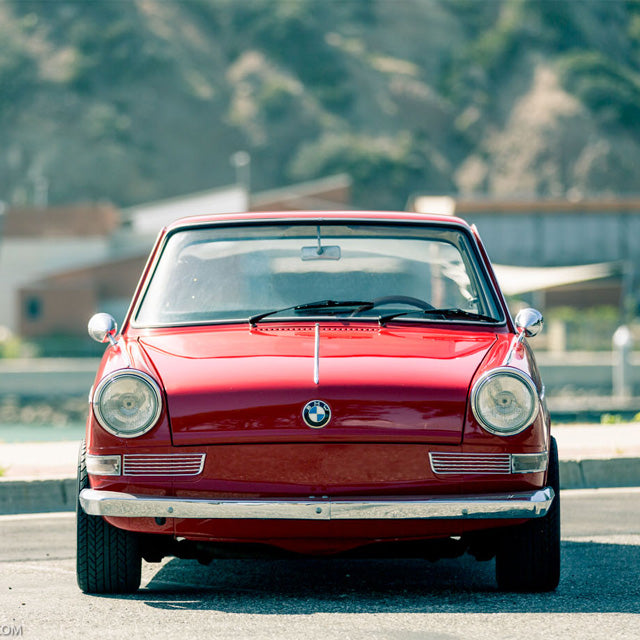In 1957 Bayerische Motoren Werke were on the brink of insolvency. They very nearly didn’t make it. One millimetric skip away in the time/space groove there exists a place where you are you, I am me, and nearly everything is the same, but BMW doesn’t exist—there’s no such thing as a sports sedan, no M3, no M5, no driver’s limo Seven Series. There’s also no X6. Pros and cons to every situation. Fortunately for us on this side of the groove, they’re still around, 10 generations deep into making the best driving mass-market cars on the planet.
The Isetta, a design built under license from an Italian refrigerator manufacturer, had gotten the Munich firm through tough early post-war times; being a moderate success despite the fact it was unbelievably awful. As sales started to slump, BMW concentrated their limited resources on a larger, more powerful version of the front-opening, slightly-motorized coffin on wheels which would become known as the 600. It was an umitigated flop, and production ended within two years. The public’s expectations were changing, and no longer would underpowered bubble cars suit their needs—improving economic conditions brought out a latent desire for more sophisticated, safer, and more stylish automobiles. Enter the 700.



Commissioned by BMW’s Austrian head of distribution, Michelotti prepared sketches of a conventionally-doored coupe based on a lengthened 600 chassis. Munich liked what they saw, but were concerned about the limited appeal of a coupe-only design, so it was decided to build two versions—the proposed two-door as well as a more practical sedan. The resultant 700 was shown at the 1959 Frankfurt auto show, and the orders flowed in right away—by show’s end, Munich had taken deposits on 25,000 cars, more than the entire production run of the 600. This immediate success negated the need for a Diamler-Benz merger then in its infancy—let the potential implications of that one role around in your head for a bit.
The 700 was built using unibody construction, BMW’s first-ever use of this technology. Utilizing an enlarged and improved version of the 600’s boxer twin, it made a grown-up 30 HP, one whole third more than its predecessor managed. Combined with modern aerodynamics and a 1,500 lb. curb weight, the 700 offered performance that enabled use on Germany’s growing network of motorways, an utterly foreign environment to Isetta and 600 drivers.
True to its heritage, the 700 was no slouch in motorsport, piloted to many important wins by nascent legends Hans Stuck and Jacky Ickx, the highlight of which was a class victory in 1960’s Hockenheim 12 hour at the capable hands of Stuck and Sepp Grieger.
After a run of more than 188,000 cars, production ended in 1965. BMW’s Neue Klasse, launched three years earlier, was an even greater success, gaining the company a healthy world-wide sales presence for the first time in their history. The 2002, and indeed all successive Beemers—from Batmobile to Z1—owe their creation to the humble little motorcycle-engined 700.








Photography by Josh Clason




















































